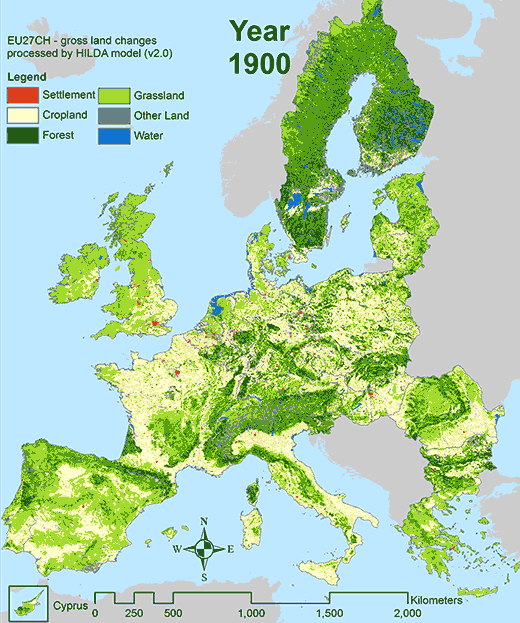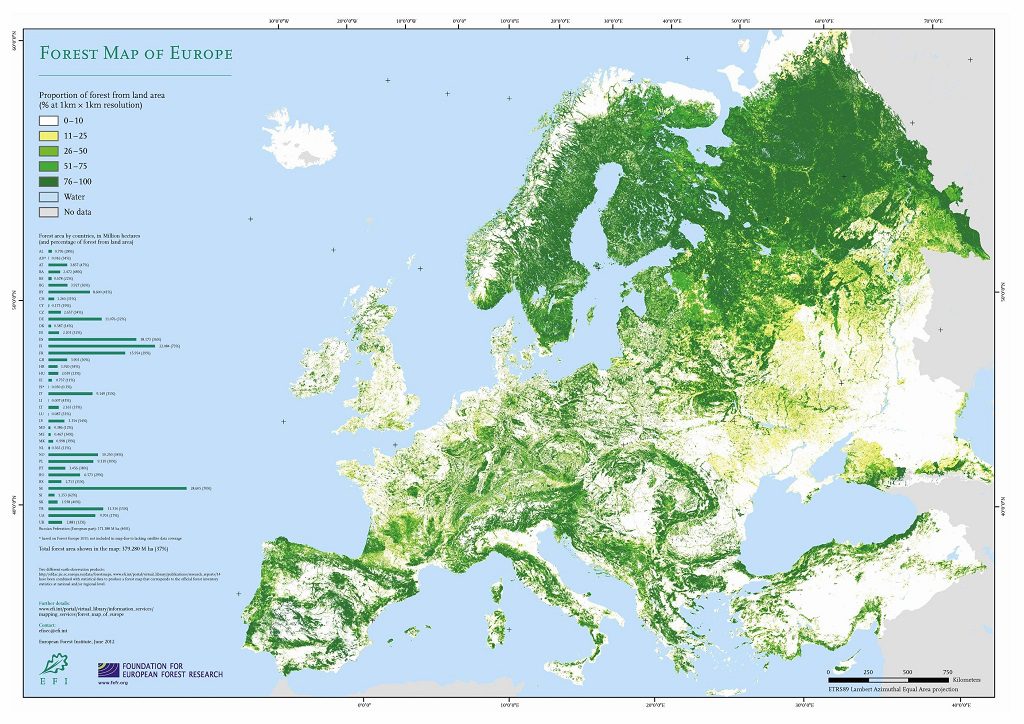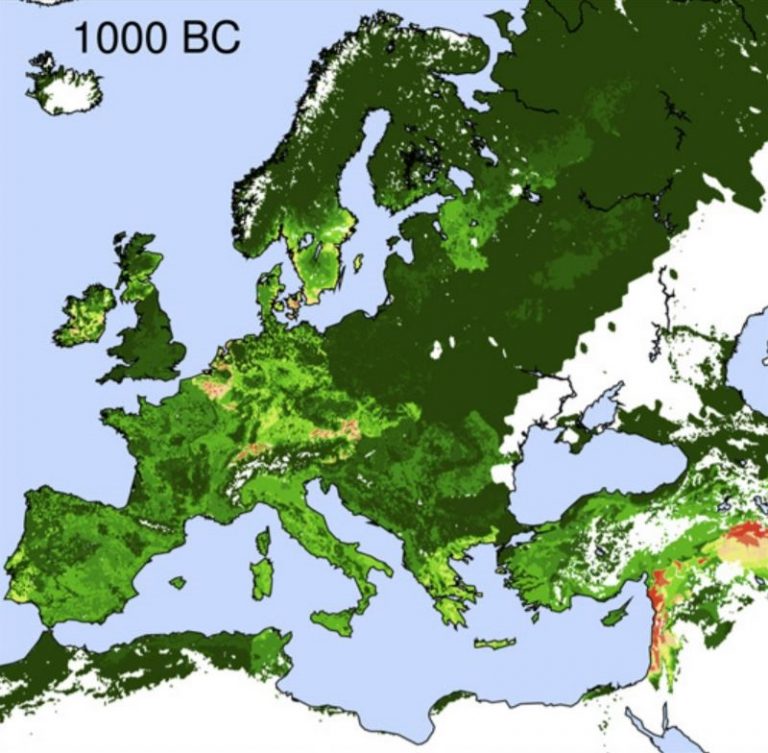After more or less 2000 years of extensive deforestation (see second deforestation animation), Europe’s forests started to increase since the 19th century. A student (Richard Fuchs) from the Wageningen University found out that Europe is a much greener continent today than it was 100 years ago. In this tool, you can play around with two maps that show the difference in historic land cover in Europe between 1900 and 2010. According to Forest-Monitor.com this is a “result of farmland abandonment, afforestation, and nature protection.”
Land changes in Europe for every decade 1900 to 2010

This map shows that Europe is greener than 110 years ago.
Source: Wageningen University
Deforestation map of Europe from 1000BC to 1850AD
This animation shows the deforestation of Europe from 1000BC. It looks pretty disastrous but watch what happens from 1900AD in the map further below.
This animation is created by Reddit user Montezum7
Find an indepth article about the deforestation in Europe here.
Detailed Forest Map of Europe

Click here to enlarge this image. Source: Astonishing1928 via Reddit
In Europe, the highest deforestation is taking place in Russia. Russia is home to nearly 25% of the world’s untouched and pure forests yet each year nearly 2000 miles of woodland are lost due to human activities and forest fires.
About 42% of the total land area in Europe is covered with forests and governments and the EU are trying to increase the forest cover annually. Top 5 countries with forests are,
1. Sweden nearly 70%
2. Finland nearly 60%
3. Lithuania nearly 45%
4. Slovenia nearly 35%
5. Croatia nearly 23%
Recently, with environmental issues such as global warming, many European leaders together with the UN looked towards to grow the forest covers in their countries, alliances such as Tropical Forest Alliance 2020 were forged to support this campaign. Although the growth rate has not taken a rapid pace yet, it is a positive step for the future and forests are growing.
Russia is the most affected country, along with highly industrialized and populated states such as Germany, Italy, United Kingdom, and France are highly affected.
Nordic countries possess the highest forested area in the region, around 70% of the land around Sweden are forested.
Every European state has forested areas to a certain extent yet the islands of Greenland and Iceland have the least forested areas below 1%.
Białowieża Forest located near eastern Poland and Belarus is the biggest forest in Europe, covering nearly 152 square kilometers.
Historically, Western Europe was the most populated region in Europe and home to many kingdoms and empires, especially the Roman, French and Spanish empires. Also, the 1st industrial revolution started from England and spread mainly around Western Europe, industrializing the region deeply, and in the process, lost much of its forests.
Amsterdam, the capital of the Netherlands has the most trees, boasting about 400,000 trees in the city. It is often considered one of the most beautiful cities in the world.
Landes de Gascogne is the largest forest in France which is also an “Artificial Forest”, which means it was planted by humans.


0 Comments